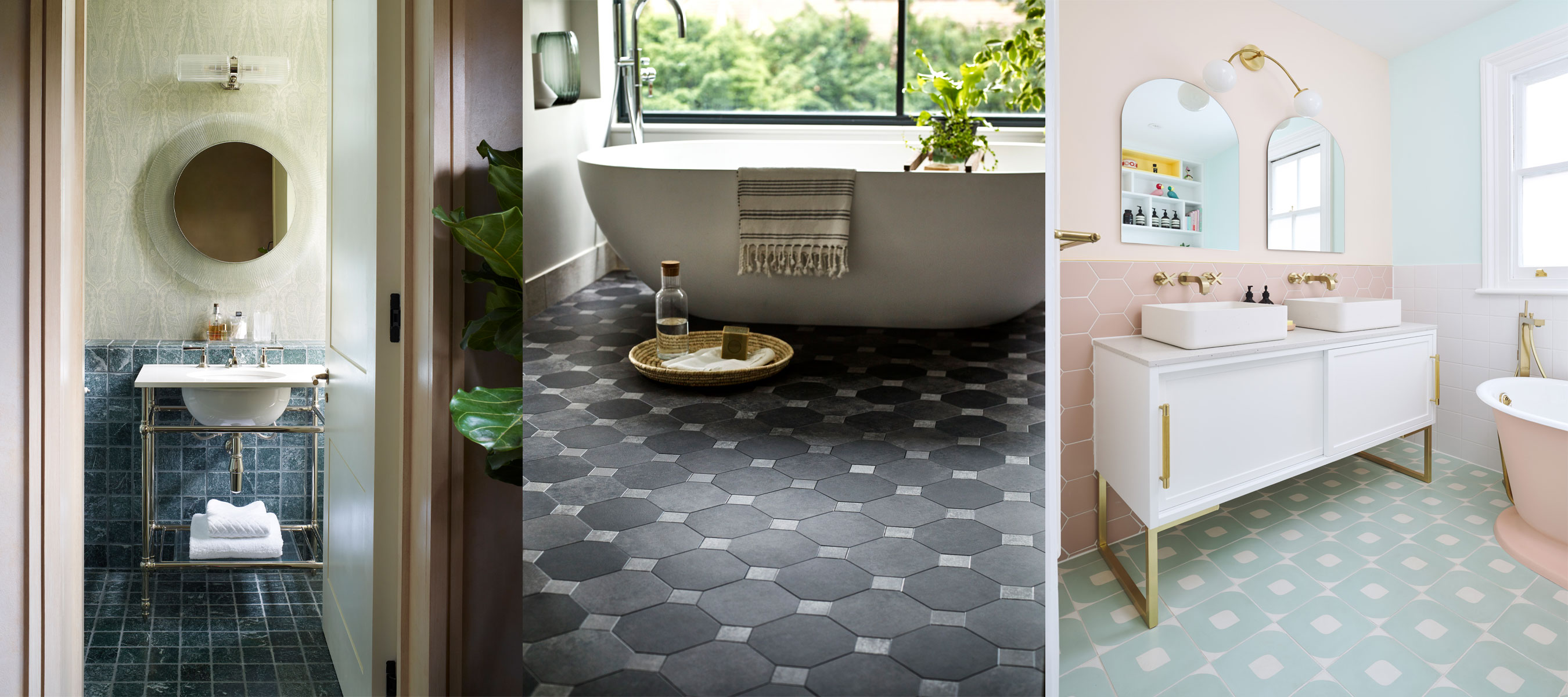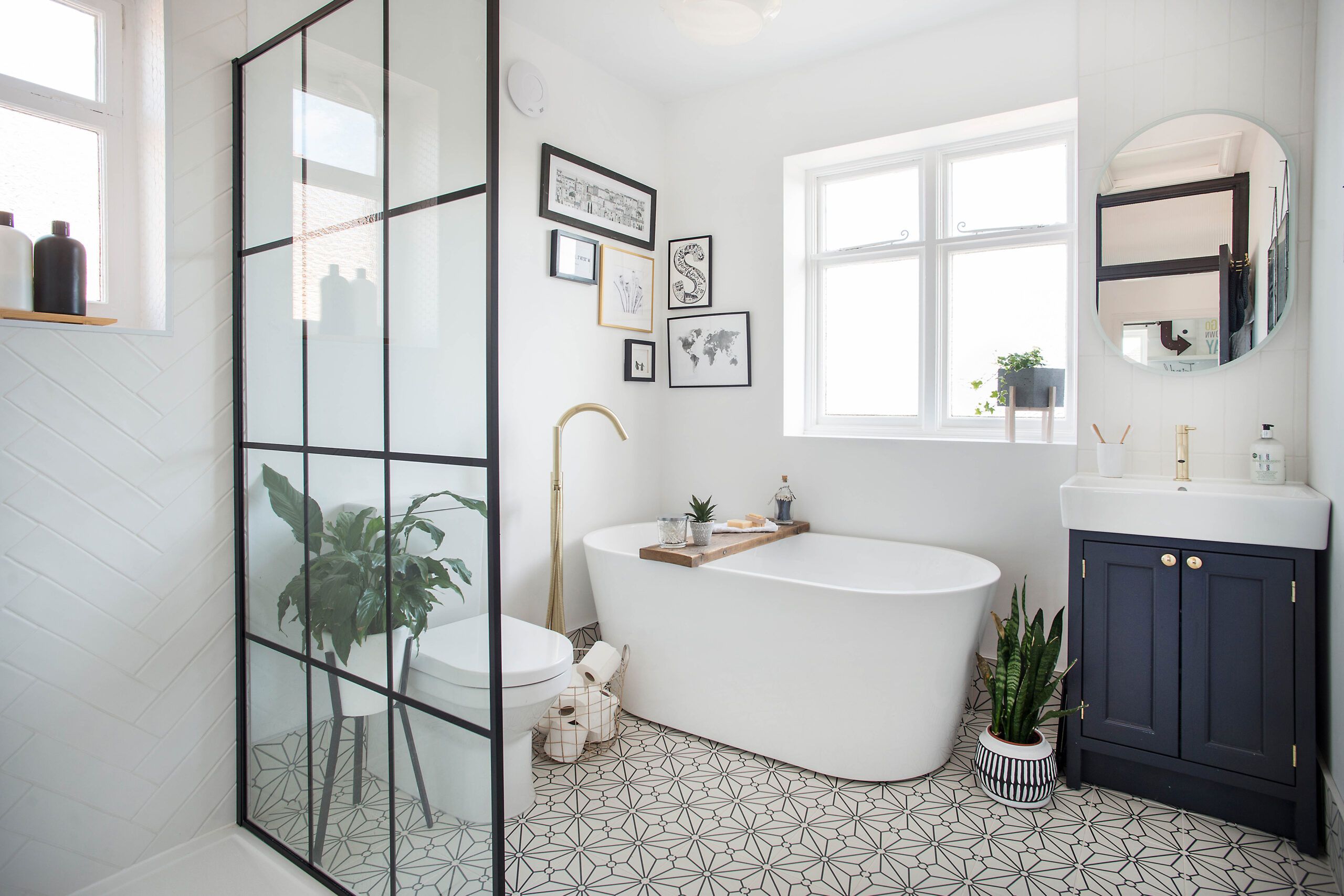Styles of Bathroom Floor Trim

Bathroom floor trim ideas – Choosing the right bathroom floor trim can elevate your bathroom design, adding a touch of sophistication and seamlessly integrating the floor with the rest of the space. It’s not just about functionality; it’s about style, and there are numerous styles to choose from to complement your bathroom’s personality.
Classic Bathroom Floor Trim
Classic bathroom floor trim exudes timeless elegance and sophistication. It’s characterized by its simple lines, clean edges, and traditional materials. This style often blends seamlessly with various bathroom designs, from traditional to transitional, adding a touch of refined charm.
Classic bathroom floor trim is ideal for creating a timeless and sophisticated look that complements various bathroom styles.
Modern Bathroom Floor Trim
Modern bathroom floor trim embraces clean lines, geometric shapes, and minimalist aesthetics. It often features bold colors, contrasting materials, and a focus on functionality. This style complements contemporary bathroom designs, adding a touch of modern elegance.
Modern bathroom floor trim is characterized by clean lines, geometric shapes, and minimalist aesthetics, making it a perfect fit for contemporary bathroom designs.
Rustic Bathroom Floor Trim
Rustic bathroom floor trim embodies warmth, natural beauty, and a touch of vintage charm. It often features natural materials like wood, stone, or reclaimed wood, with rough textures and imperfections that add character. This style complements rustic, farmhouse, and cottage bathroom designs, creating a cozy and inviting atmosphere.
Rustic bathroom floor trim brings warmth and natural beauty to the bathroom, creating a cozy and inviting atmosphere.
Contemporary Bathroom Floor Trim
Contemporary bathroom floor trim blends modern elements with a touch of traditional charm. It often features clean lines, subtle details, and a focus on functionality, while incorporating natural materials and warm colors. This style complements transitional bathroom designs, creating a balanced and sophisticated look.
Contemporary bathroom floor trim blends modern elements with a touch of traditional charm, creating a balanced and sophisticated look that complements transitional bathroom designs.
Installing Bathroom Floor Trim

Installing bathroom floor trim is a crucial step in creating a polished and professional look for your bathroom. It not only adds a touch of elegance but also protects the edges of your flooring from moisture damage and wear and tear. Whether you choose to use traditional wood trim or a more modern alternative, proper installation is key to achieving a seamless and long-lasting finish.
Preparing for Installation, Bathroom floor trim ideas
Proper preparation is crucial for a successful bathroom floor trim installation. Before you begin, ensure that the bathroom floor is clean, dry, and free of any debris. You’ll need to remove any existing trim, and if necessary, fill any gaps or cracks in the floor. It’s also important to mark the location of the trim using a pencil or chalk line to ensure accurate placement.
Cutting the Trim
Once the floor is prepared, you’ll need to cut the trim to the desired length. This can be done using a miter saw or a hand saw, depending on your preference and the type of trim you’re using. Be sure to measure carefully and make precise cuts to ensure a perfect fit. When cutting, it’s essential to use a sharp blade and a sturdy work surface to prevent chipping or damage to the trim.
Securing the Trim
There are several methods for securing bathroom floor trim, depending on the material you’re using. For wood trim, you can use nails, screws, or construction adhesive. Ensure you use appropriate fasteners that are compatible with the material and thickness of the trim. For other materials like PVC or metal, you might need to use specific adhesives or clips.
Installing Wood Trim
- Measure and cut: Measure the length of each section of trim needed and cut them accurately using a miter saw or hand saw.
- Apply adhesive: Apply a bead of construction adhesive along the back of the trim, ensuring it covers the entire surface that will be in contact with the floor.
- Secure with fasteners: After applying adhesive, use nails or screws to secure the trim to the floor. Make sure to countersink the fasteners to prevent them from protruding above the surface.
- Finish with caulk: After installing the trim, use a paintable caulk to fill any gaps or cracks between the trim and the floor. This will create a smooth and seamless finish.
Installing PVC Trim
- Measure and cut: Measure the length of each section of trim needed and cut them accurately using a miter saw or hand saw.
- Apply adhesive: Apply a bead of construction adhesive along the back of the trim, ensuring it covers the entire surface that will be in contact with the floor.
- Secure with clips: PVC trim often comes with clips that snap into place to secure it to the floor.
- Finish with caulk: After installing the trim, use a paintable caulk to fill any gaps or cracks between the trim and the floor. This will create a smooth and seamless finish.
Installing Metal Trim
- Measure and cut: Measure the length of each section of trim needed and cut them accurately using a miter saw or hand saw.
- Apply adhesive: Apply a bead of construction adhesive along the back of the trim, ensuring it covers the entire surface that will be in contact with the floor.
- Secure with screws or clips: Metal trim can be secured with screws or clips depending on the type of trim you are using.
- Finish with caulk: After installing the trim, use a paintable caulk to fill any gaps or cracks between the trim and the floor. This will create a smooth and seamless finish.
Finishing Touches
After installing the trim, it’s important to clean up any excess adhesive or caulk. You can then paint or stain the trim to match your bathroom décor. Remember to allow the paint or stain to dry completely before using the bathroom.
Bathroom Floor Trim with Different Flooring Types: Bathroom Floor Trim Ideas

Choosing the right bathroom floor trim is crucial for achieving a seamless and polished look, especially when working with different flooring types. It’s about creating a cohesive visual flow, and trim plays a vital role in achieving this.
Ceramic Tile
Ceramic tile is a popular choice for bathrooms due to its durability and water resistance. When using ceramic tile, the best trim options include:
– Ceramic Tile Trim: This is the most common and straightforward option. It matches the tile perfectly, creating a seamless transition.
– Metal Trim: Metal trim, like stainless steel or aluminum, offers a modern and sleek look. It can be used to accentuate the tile and create a contemporary feel.
– PVC Trim: PVC trim is a budget-friendly option that is also waterproof and easy to install. It comes in various colors and styles to match different tile designs.
Vinyl Plank
Vinyl plank flooring is gaining popularity due to its affordability, durability, and water resistance. Choosing the right trim for vinyl plank flooring requires considering the following:
– Vinyl Plank Trim: This is the ideal option for matching the plank flooring perfectly. Vinyl plank trim is available in various colors and styles to complement different plank designs.
– Wood Trim: While not as common, wood trim can be used with vinyl plank flooring, especially if you’re aiming for a more traditional or rustic look.
– PVC Trim: PVC trim is a versatile option that can be used with vinyl plank flooring, offering a budget-friendly and waterproof solution.
Wood Flooring
Wood flooring can add warmth and elegance to a bathroom, but it requires careful consideration when choosing trim. Here are some suitable options:
– Wood Trim: Matching wood trim is the most common and aesthetically pleasing choice for wood flooring. It creates a seamless transition and enhances the natural beauty of the wood.
– Painted Wood Trim: Painting the wood trim a different color can create a visual contrast and add a unique touch to the bathroom.
– Metal Trim: Metal trim, like brass or nickel, can add a touch of sophistication and complement the wood flooring, especially if you’re going for a more modern or minimalist look.
Bathroom Floor Trim and Accessibility

Creating a bathroom that is both stylish and accessible is a key consideration for many homeowners. Bathroom floor trim plays a vital role in achieving this goal, and it’s not just about aesthetics. Properly designed trim can significantly enhance safety and mobility for individuals with disabilities, making the bathroom a more inclusive and comfortable space for everyone.
Accessible Bathroom Floor Trim Designs
When designing bathroom floor trim for accessibility, it’s essential to prioritize safety and ease of movement. Here are some key considerations:
* Color Contrast: Using high-contrast colors for trim and flooring helps visually impaired individuals identify transitions and potential hazards. For example, a dark trim against a light-colored floor creates a clear visual boundary.
* Tactile Cues: Incorporate tactile elements into the trim, such as raised edges or textured surfaces, to provide additional sensory feedback for individuals with visual impairments. This helps them navigate the space more confidently.
* Beveled Edges: Beveled edges on the trim can prevent tripping and falls, especially for those using mobility aids or walkers. The gradual transition makes it easier to maneuver without catching on sharp corners.
* Slip-Resistant Materials: Choose trim materials that are slip-resistant, particularly in areas prone to water splashes or condensation. This reduces the risk of accidents and ensures a safe bathroom environment.
Creating a Stylish and Accessible Bathroom
The key to creating a bathroom that is both stylish and accessible is to consider the needs of all users while embracing design elements that enhance the overall aesthetic. Here are some ideas:
* Integrated Trim: Incorporate the trim seamlessly into the bathroom design. For example, use a continuous tile strip as a border that doubles as a functional trim. This creates a cohesive look while maintaining accessibility.
* Decorative Trim: Elevate the aesthetic with decorative trim elements. Use intricate moldings, decorative tiles, or even wood accents to create visual interest and enhance the bathroom’s style.
* Contrasting Colors: Utilize contrasting colors strategically. While ensuring accessibility with high-contrast trim, consider incorporating colors that complement the overall bathroom design. This adds a touch of personality and visual appeal.
